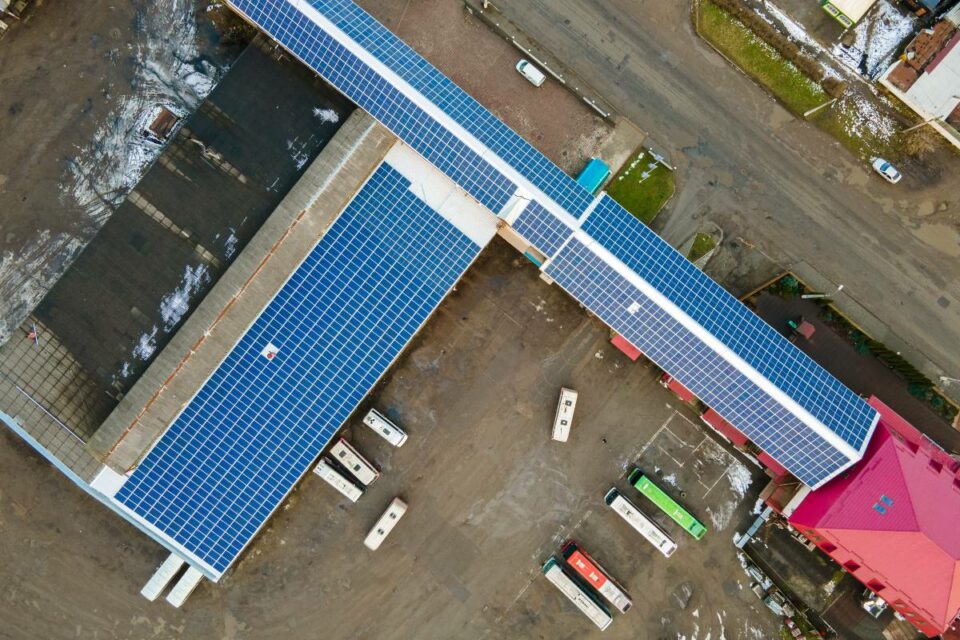In today’s rapidly evolving industrial landscape, size matters – but height matters even more. Since 2012, warehouse dimensions have exploded, with modern facilities averaging a staggering 185,000 square feet – nearly 2.5 times larger than their early-2000s counterparts. But here’s what really catches my eye after 18 years in commercial real estate: industrial property ceiling heights have quietly revolutionized warehouse efficiency, climbing to an average of 32.3 feet. This isn’t just about building taller; it’s about building smarter. Let me show you why these crucial extra feet could be the difference between capping your growth and skyrocketing your operations.
Key Takeaways
- Clear height is the most crucial measurement in modern industrial properties, directly impacting storage capacity and operational efficiency
- Modern warehouse specifications have evolved significantly, with heights increasing from 20 feet to 40+ feet to accommodate e-commerce needs
- Understanding ceiling height types helps maximize facility operations and future-proofs your investment in industrial real estate
Understanding Height Measurements
When we talk about industrial building heights, we’re actually dealing with three distinct measurements:
- Floor to Floor Height: This is the total vertical distance between successive floor levels. Think of it as the building’s full story height.
- Floor to Ceiling Height: Measured from the floor to the actual ceiling surface. This is what you’d see if you looked straight up in an empty space.
- Clear Height (my personal favorite): This is the usable height from the floor to the lowest hanging obstruction, usually sprinkler systems or HVAC ducts.
Here’s a practical example:
Building A:
- Floor to Floor: 24 feet
- Floor to Ceiling: 22 feet
- Clear Height: 20 feet
The Evolution of Heights in Industrial Real Estate
Let me share something fascinating – back in the 1980s, a 20-foot clear height was considered premium warehouse specifications. Today? That’s barely entry-level. Modern distribution centers routinely demand 36-foot clear heights, with some e-commerce facilities pushing 40+ feet.
Why the dramatic change? Two words: cubic efficiency. Modern warehouse operations are all about maximizing every inch of space, and here’s how the numbers break down:
• A 100,000 sq ft warehouse with 24′ clear height = 2.4 million cubic feet
• The same footprint with 36′ clear height = 3.6 million cubic feet
• That’s a 50% increase in storage capacity!
Why Ceiling Height Matters in Industrial Properties
Ceiling height, particularly clear height, is vital because it directly affects storage capacity, equipment clearance, and operational efficiency. Higher ceilings enable advanced racking systems and automated machinery usage, optimizing cubic space and productivity. This measure influences lease rates and property values, making it a key factor for investors and tenants alike in industrial real estate markets.
Operational Impact
Let’s talk about real-world applications. Storage efficiency isn’t just about height – it’s about the entire ecosystem of your operation. Here’s what higher ceilings enable:
- Advanced racking systems
- Automated storage and retrieval systems
- More efficient material handling equipment
- Better air circulation and temperature control
But remember, with great height comes great responsibility. Higher ceilings mean:
• Increased energy costs for heating/cooling
• More sophisticated fire suppression requirements
• Higher initial construction costs
Value Proposition
Here’s where my expertise really comes into play. In today’s market, industrial properties and industrial warehouses with higher ceilings consistently command premium rents. I’ve seen properties with 36-foot clear heights lease for 15-25% more than their lower-height counterparts.
Cost-Benefit Analysis: When Higher Ceilings Pay Off
This section would be incredibly valuable because while you mention that higher ceilings command 15-25% premium rents and cost 10-15% more to construct, you don’t dive deep into the financial calculations that help readers make informed decisions.
Key topics to cover under this heading:
- ROI Timeline Calculator: Break down how long it takes for the additional storage capacity to offset the higher construction/lease costs
- Operating Cost Impact: Detailed analysis of energy costs, insurance premiums, and maintenance expenses for different ceiling heights
- Break-Even Analysis: At what storage utilization rate does investing in higher ceilings become profitable
- Hidden Cost Factors: Property taxes, specialized equipment requirements, and labor costs for high-reach operations
- Market Appreciation Rates: How ceiling height affects long-term property value appreciation compared to standard-height facilities
This addition would transform your article from informational to actionable, giving readers the financial framework they need to justify ceiling height decisions to stakeholders. It bridges the gap between your technical expertise and the bottom-line concerns that drive real estate decisions.
Market Trends You Can’t Ignore
The e-commerce boom has revolutionized warehouse design. Companies like Amazon have redefined what we consider standard ceiling specifications. Here’s what I’m seeing in the market:
- Class A facilities now have a minimum of 32′ clear
- E-commerce demands 36′-40′ clear
- Older properties with 24′ clear becoming obsolete
Future-Proofing Your Industrial Investment
When it comes to industrial property ceiling heights, thinking ahead isn’t just smart – it’s essential. As someone who’s witnessed the dramatic evolution of warehouse specifications over two decades, I can tell you that today’s “more than adequate” can quickly become tomorrow’s “barely sufficient.” With warehouse clear heights climbing from an average of 28 feet to 32.3 feet in just the last decade, we’re seeing a clear trend toward vertical expansion.
Emerging Technologies and Height Requirements
The future of industrial storage solutions is increasingly automated. I’m seeing more clients investing in automated storage and retrieval systems (AS/RS) that require significantly higher clearances than traditional racking systems. These systems often need heights of 40 feet or more to operate efficiently. When advising clients on new industrial properties, I always emphasize considering these future technology adoptions in their ceiling height decisions.
Sustainability and Energy Considerations
Higher ceilings in industrial architecture aren’t just about storage capacity. Modern HVAC systems and energy-efficient lighting solutions often require additional overhead space. Smart building systems, solar panel infrastructure, and advanced ventilation systems all benefit from generous ceiling heights. I’ve seen facilities struggle to retrofit green technologies simply because they lacked the vertical space.
Industry-Specific Height Requirements
E-commerce Operations
The explosion of e-commerce has revolutionized warehouse efficiency requirements. With companies like Amazon setting new standards, e-commerce facilities typically demand clear heights of 36-40 feet minimum. This isn’t arbitrary – these heights optimize cubic storage capacity for the rapid-fire picking and packing operations characteristic of online retail fulfillment.
Manufacturing Specifications
Manufacturing facilities present unique challenges when it comes to industrial specifications. While pure storage warehouses might focus on maximizing vertical space, manufacturing operations often need to balance ceiling height with equipment requirements. I recently helped a client in advanced manufacturing who needed 40-foot clear heights not for storage, but to accommodate specialized production equipment.
Cold Storage Requirements
The cold storage sector deserves special mention. These facilities typically require additional ceiling height for specialized insulation and refrigeration systems. In my experience, modern cold storage facilities often need clear heights of 35-40 feet to accommodate both the mechanical systems and the increasingly automated storage solutions being deployed in temperature-controlled environments.
Impact of Ceiling Heights on Warehouse Energy Efficiency
Ceiling height can affect energy consumption for heating, ventilation, and cooling. Taller spaces may require more energy to condition but allow better air circulation and lighting configurations that can reduce overall costs. This section should discuss best practices for balancing ceiling height with energy efficiency.
FAQs
What’s the optimal clear height for a modern distribution center?
How does ceiling height affect property value?
What’s the cost difference between standard and high-ceiling construction?
Can older buildings be retrofitted for higher ceilings?
How do I determine the right ceiling height for my operation?
Conclusion
Let’s be honest – finding the right industrial space isn’t just about location anymore. After nearly two decades in commercial real estate, I can tell you that ceiling height can make or break your operational success. Whether you’re outgrowing your current space, planning a strategic move, or just starting to explore your options, I’d love to share what I’ve learned about maximizing vertical space for businesses like yours.
I believe in straight talk and real solutions. Drop me a line, and let’s have a conversation about your business needs – no pressure, just practical insights from someone who’s helped countless companies find their perfect fit.




